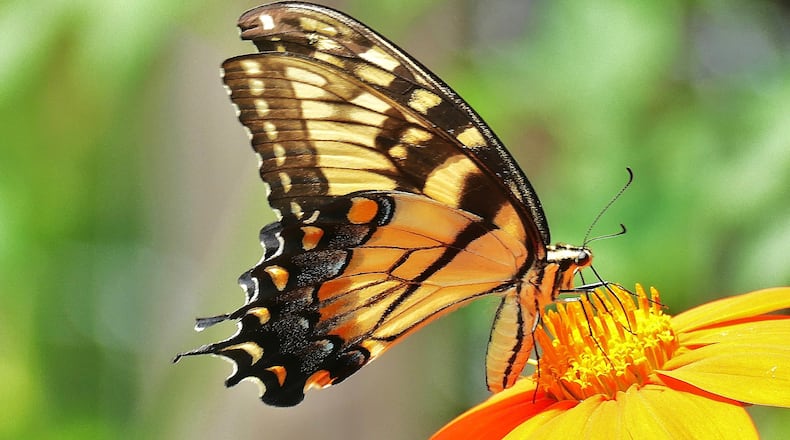A year ago, biologists and homeowners alike were asking: Where are the butterflies? That was after several annual butterfly counts around Georgia had reported record low numbers of the colorful insects.
Butterfly enthusiasts were hoping for better results this year, but, so far, that has not happened. “It seems this year is just as bad as last year,” said Phil Delestrez, a Department of Natural Resources biologist and one of Georgia’s top butterfly experts. He helps conduct annual counts at Panola Mountain State Park and elsewhere in the state.
A similar grim assessment comes from retired DNR biologist Terry Johnson, who on June 24 helped conduct the daylong count at the Piedmont National Wildlife Refuge and the Rum Creek Wildlife Management Area in Middle Georgia. The count found about as many butterfly species (57) as last year, but tallied 29% fewer individuals than in 2021.
Writing in the Monroe County Reporter, Johnson said several of his fellow count participants lamented that although last year’s butterfly count was bad, “this year was worse.” Some also noted that they had been seeing “far fewer butterflies than expected” for several weeks before the count.
The results of another late June survey — the Lookout Mountain count, which included Cloudland Canyon State Park in North Georgia — also were dismally low: only 36 species and 368 individuals.
The butterfly scarcity prompted Tennessee butterfly expert Bill Haley, who led the Lookout Mountain count on June 25, to raise a scary possibility: “Are butterfly numbers in decline? While I hope that is not the case, our 2022 numbers certainly suggest this may be true.”
Delestrez says it isn’t just butterflies: Insect numbers in general seem way down. “I’m not even getting that many bug splats on my car windshield anymore, and that’s odd for this time of year,” he said.
No one knows the reasons for the missing butterflies and if it signals a future trend. Climate change, vagaries of weather, pesticide spraying and development all could be factors.
“Perhaps next year will be better,” Johnson said.
IN THE SKY: From David Dundee, Tellus Science Museum astronomer: The moon will be last quarter on Wednesday. Rising in the east are Mercury (low) just before dawn; Venus, a few hours before sunrise; Mars, around 2 a.m.; Jupiter, around midnight; and Saturn, a few hours after dark.
Charles Seabrook can be reached at charles.seabrook@yahoo.com.
About the Author
Keep Reading
The Latest
Featured


